Although QR Codes were initially created to track automotive parts, leading car manufacturers like Cadillac, GM Motors, and Mercedes have expanded their use for various innovative purposes. Read this blog post to discover other unique applications of QR Codes in the automobile industry.
Start 14 Day Free trial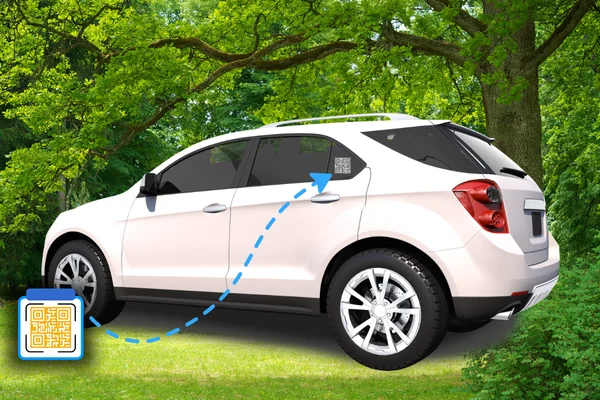
Although QR Codes were initially created to track automotive parts, they have evolved into a versatile tool for numerous applications today. Smartphones have popularized the use of QR Codes for various purposes, including advertising, banners, and social media.
“To adapt to the changes, companies in the auto and electronic industries had to manage a wide variety of parts and needed to store more information on each product in their system. This led to decreased efficiency at factories, as workers had to scan barcodes more frequently, which was difficult and tiring,” says Masahiro Hara, co-creator of the QR Code.
Top car manufacturers like Cadillac, GM Motors, and Mercedes have found many innovative uses for QR Codes beyond tracking. What are some other applications of QR Codes in the automobile industry?

According to Hedges & Company, there are about 283.3 million registered vehicles in the US alone. Additionally, researchers report that cops pull over around 20 million drivers across the country each year. Stopping drivers to check their registration is not only tedious but also prone to significant human errors.
The Union Government has adopted QR Codes for vehicle registration – smart cards with QR Codes and NFC for driving licenses and vehicle registration certificates (RCs).
Government officials state that the move aims to help digitize the process to combat forgery and duplication of documents. Drivers simply need to download their respective QR Code to their smartphones, containing their registration information, and show it to the police to confirm their identity and vehicle registration.
QR Codes for vehicle registration help police officers and drivers save time, and automation can also help combat automotive crimes.
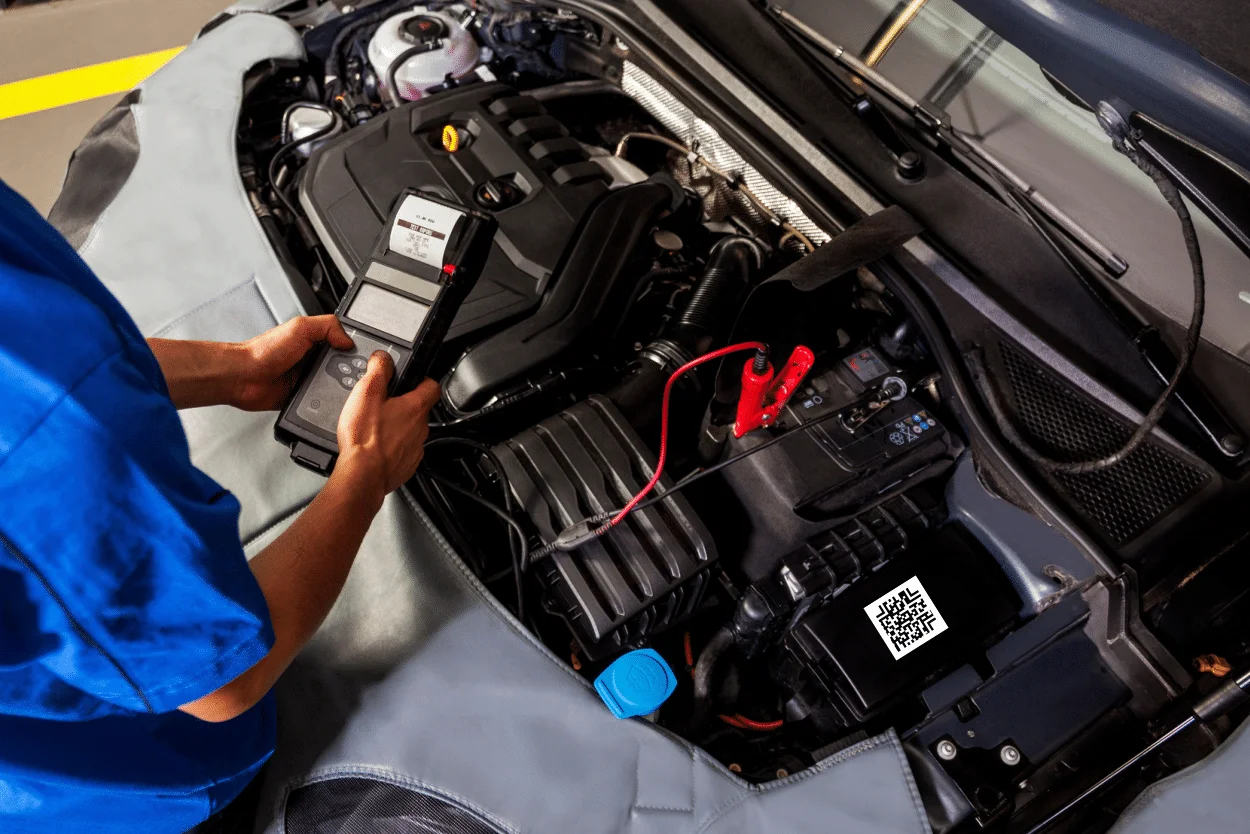
Accurate identification of car components is crucial in automobile manufacturing. Each part of the vehicle has specific dimensions, functionality, and fitting. When done manually, there can be high chances of errors, resulting in significant damages.
QR Codes can be used to track and identify car components accurately in the automotive industry. QR Codes can be embedded in the vehicle components during the manufacturing process, containing relevant data.
During assembly, employees can simply scan the QR Code, retrieve the information, and assemble the parts in their respective places without errors.
Furthermore, according to the FBI, 721,885 vehicles were stolen in 2019, causing nearly $6.4 billion in losses due to motor vehicle theft. Integrating QR Codes on automobiles and their parts can help authorities trace the vehicle by analyzing its engine and chassis number to track the theft.
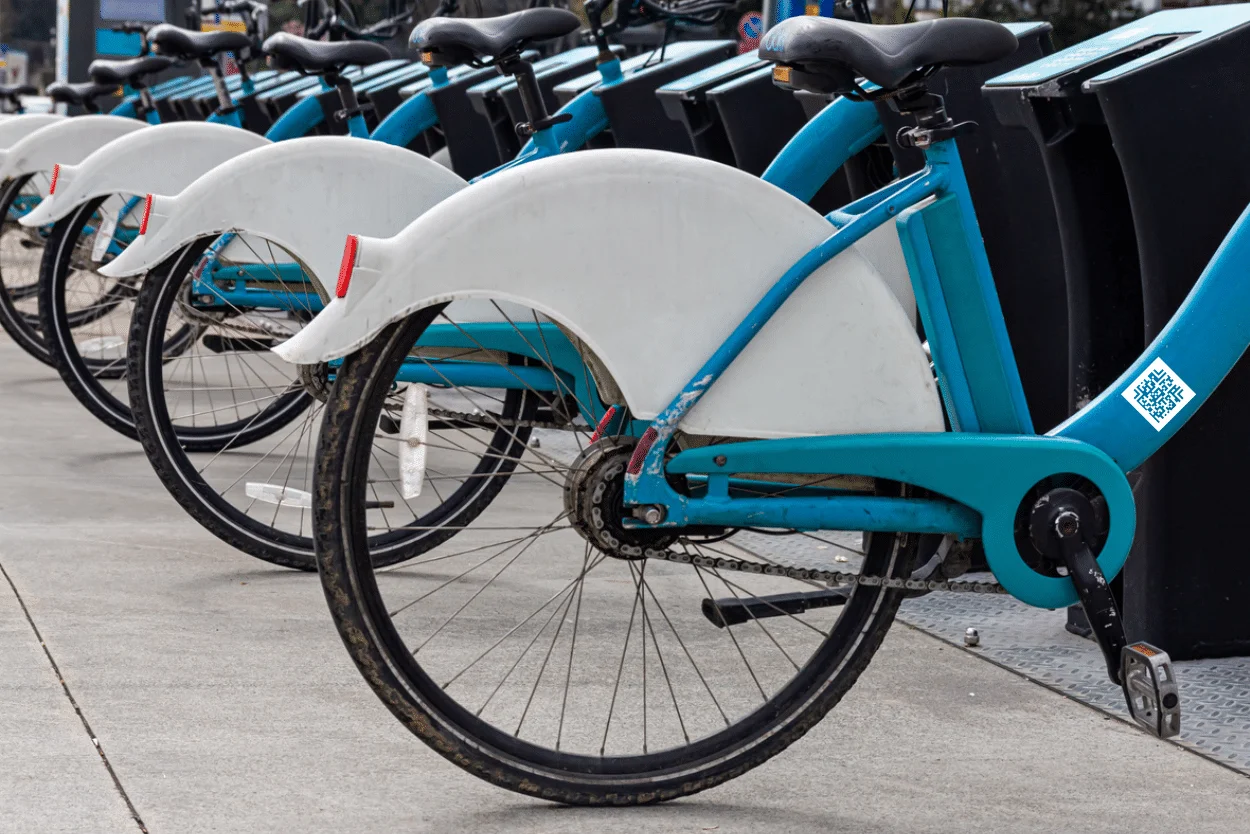
The traditional method of preparing a rental agreement requires physical documentation and is overall tedious. QR Codes for rental vehicles have simplified this process.
Companies such as Uber’s Lime and JUMP, ZoomCar’s PEDL, and Hellobike’s Ofo and Mobike have implemented QR Codes on their bikes to unlock, ride, and park them safely at their respective dockless stations – all with a simple scan.
To unlock a bike, users merely scan the QR Code on the bike, pay through the app, and enjoy the ride. Embedding QR Codes on bikes also eliminates the need to carry keys to start the vehicle. Anyone with the bike app can scan the QR Code, unlock the bike, and use it without worrying about physical keys.
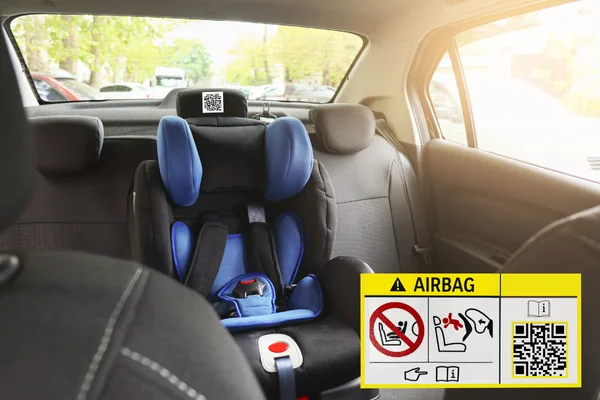
Passenger safety is of utmost importance to any automobile manufacturer. Ensuring passenger safety during a crash is a primary concern for any rescue team.
In 2019, Toyota announced a recall in collaboration with the Carma Project concerning their Takata airbag defect. To address this issue, Toyota announced that up to 70 million vehicles were recalled for defective Takata airbags.
Vehicle owners only needed to scan a QR Code in their vehicle to learn about this information and be notified if they were affected by the recall.
Additionally, Mercedes added QR Codes to their cars designed to help firefighters and paramedics obtain critical information needed to save car accident victims. The QR Code directed users to a webpage displaying how to cut each vehicle’s type to free its passengers.
A QR Code embedded on a vehicle can help users retrieve information such as the country of origin, safety measures, troubleshooting tips, and even car parts details to stay updated on product updates and model recalls.
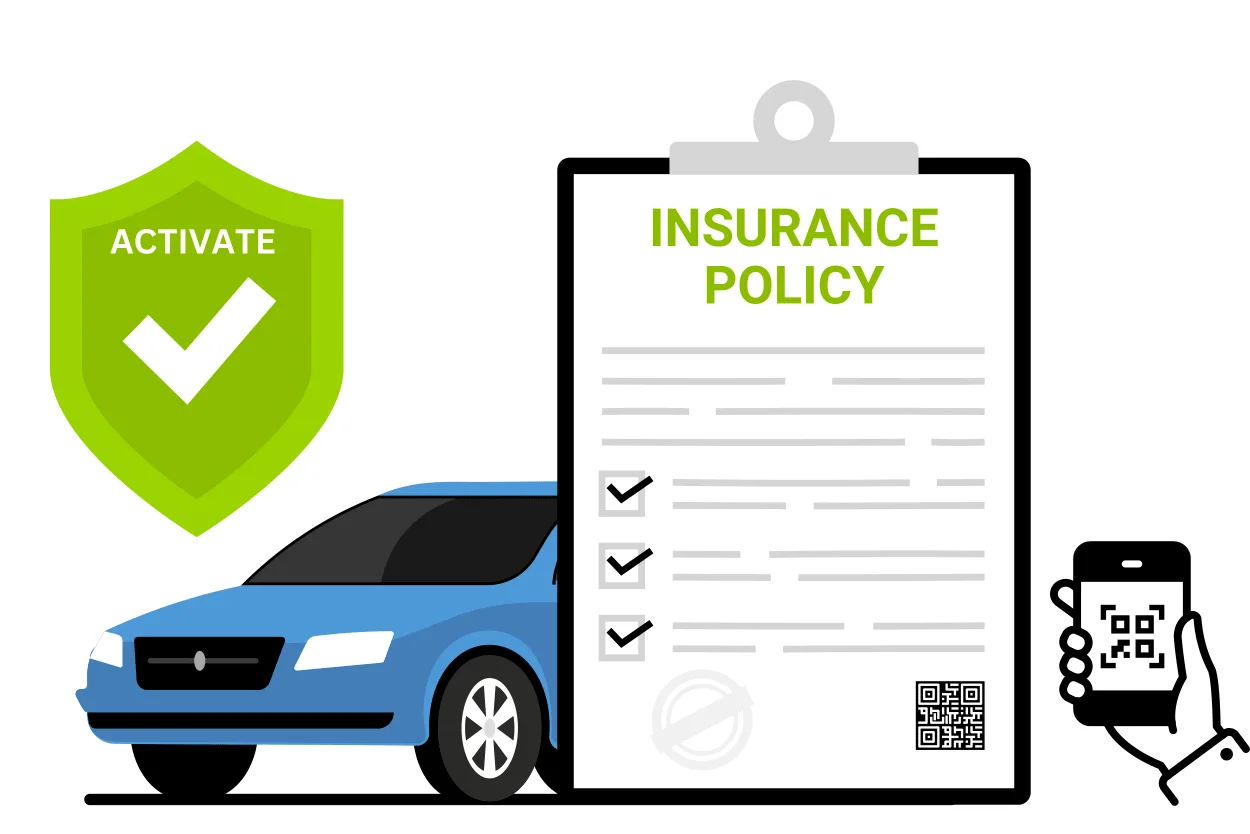
All vehicles come with insurance policies, typically consisting of a file of papers that can be challenging to store, maintain, and renew. Several government agencies have announced the digitization of physical insurance policies by embedding QR Codes.
The Insurance Regulatory and Development Authority stated that “All motor policies issued on or after 1st of December, 2015 shall essentially contain a Quick Response Code. This QR Code would be used to verify the authenticity of the electronic policy.”
QR Codes on insurance policies can help officials, including traffic police, verify the policy’s authenticity by confirming it with their database. Additionally, they can redirect the QR Code to their renewal website for easy renewal without going through agents. The same website can provide all the information one needs about vehicle insurance policies to expedite the process.
Create bulk QR Codes for your insurance agency to save time and maximize efficiency to renew, update, or check users’ policies within no time. You can also use an NFCCARD QR Code generator for paperless and contactless insurance.
The evolution of smart voice assistants such as Siri, Alexa, and Google Assistant has been enormous. According to statistics, 72% of US consumers engage with voice search through digital assistants.
Tech-savvy vehicle owners prefer voice-activation software to control a multitude of features in cars for safe, mobile-free access to voice assistants.
Cadillac has embraced the idea of integrating Amazon Alexa, which offers several benefits to vehicle owners – making phone calls, changing music, getting directions, or even opening the garage door, all via simple voice commands.
To activate Alexa, users simply need to link their Cadillac Connected Service plan with their Amazon account and scan the QR Code displayed on their Cadillac infotainment system to start the voice assistant.
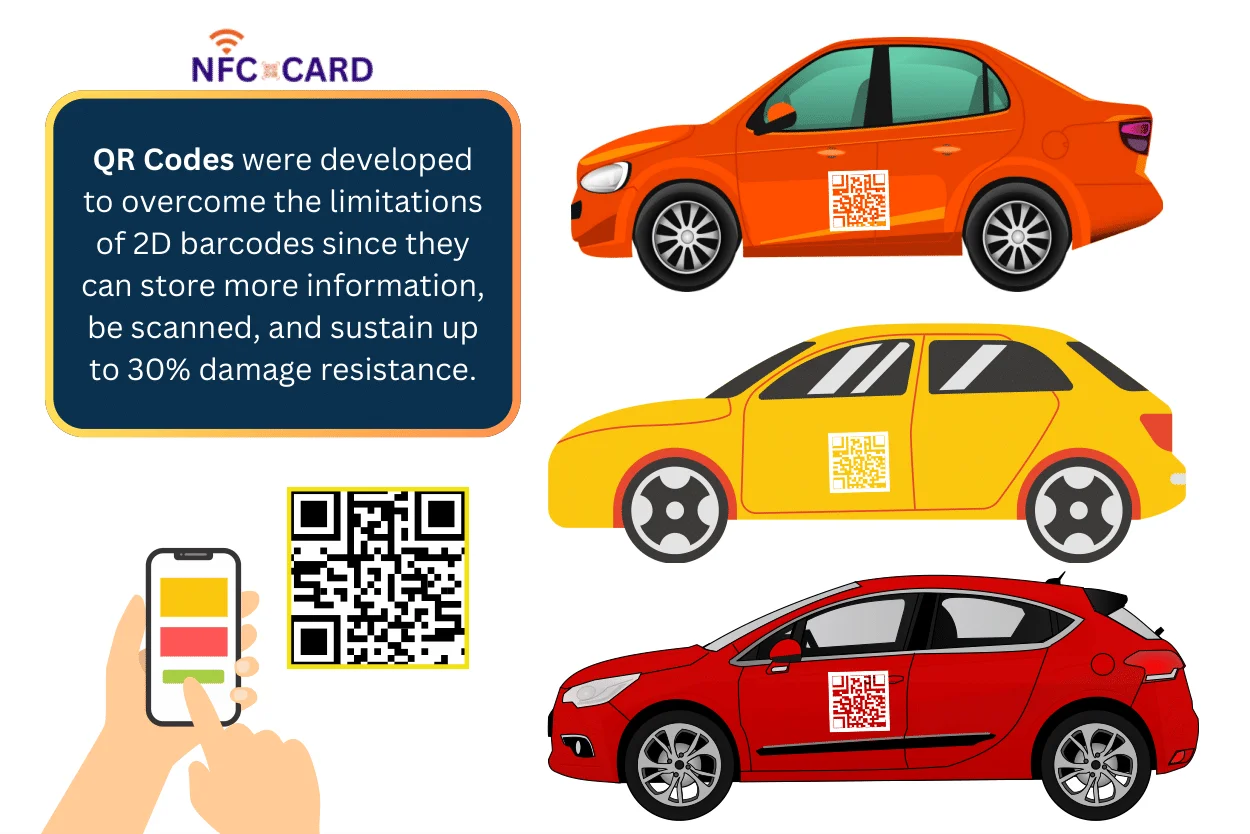
QR Codes were practically invented for Toyota to keep track of automotive parts’ inventory back in 1994 by Denso Wave Corporation. QR Codes were developed to overcome the limitations of 2D barcodes since they can store more information, be scanned, and sustain up to 30% damage resistance.
With the aid of QR Codes for inventory systems, automobile manufacturers can monitor their inventory levels, track manufacturing processes, build assemblies according to materials, and even collect real-time data, all with one scan.
Automobile warehouse employees can simply use their smartphones or tablets to scan QR Codes, track manufacturing processes, and fill forms at various stages to maximize efficiency.